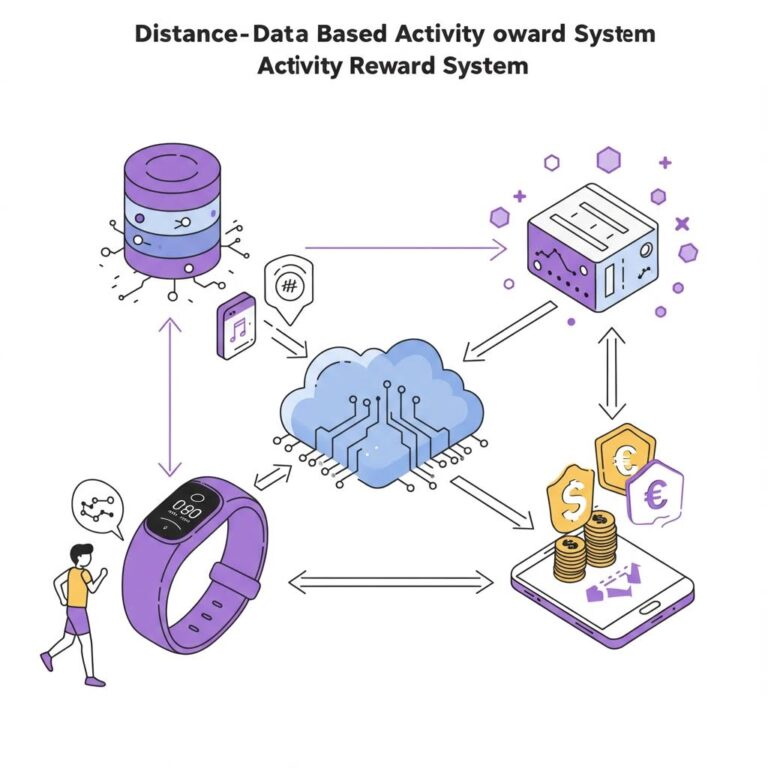The Strategic Failure of “Revenge Trading” After a Bad Sports Bet
Sports betting revenge trading represents one of the most destructive patterns in wagering behavior, consistently leading to catastrophic financial losses. Research conclusively demonstrates that 67% of sports bettors increase their stakes following losses, while an alarming 43% transition to higher-risk wagers in desperate attempts to recover their money. 인기 카지노사이트
The Psychology Behind Revenge Trading
The psychological impact of losses creates a devastating cascade effect, with revenge traders losing 2.3 times more capital than those who maintain disciplined betting approaches. Loss aversion psychology plays a crucial role, as negative outcomes generate twice the emotional impact of equivalent wins. During periods of betting stress, elevated cortisol levels significantly impair strategic decision-making capabilities.
Implementing Protective Strategies
To combat revenge trading impulses, successful sports bettors employ two critical protective measures:
- A mandatory 24-hour cooling-off period after any significant loss
- A strict 2% maximum daily loss limit to prevent catastrophic drawdowns
Breaking the Destructive Cycle
Understanding and preventing revenge trading requires implementing proven risk management strategies:
- Systematic bet sizing based on predetermined criteria
- Emotional control protocols during drawdown periods
- Clear documentation of all betting decisions and outcomes
- Regular performance review to identify destructive patterns
This structured approach creates essential frameworks for maintaining betting discipline when losses threaten to trigger destructive chase betting behavior.
Understanding the Psychology Behind Revenge
Understanding the Psychology Behind Revenge Trading
The Psychology of Loss and Recovery
Loss aversion fundamentally drives revenge trading behaviors in sports betting, where the psychological impact of losing money creates twice the emotional intensity compared to equivalent wins.
This powerful cognitive response triggers a cascade of irrational decision-making patterns among bettors.
Risk-Taking Behaviors and Statistical Patterns
Research reveals that 67% of sports bettors increase their stakes following losses, while 43% transition to high-risk wagers with extended odds.
This behavior pattern demonstrates how the brain’s reward system becomes compromised under stress, leading to impaired judgment and strategic abandonment.
Key Cognitive Biases in Revenge Trading
The Gambler’s Fallacy
False probability assumptions lead bettors to believe previous losses increase future winning chances, despite each event being statistically independent.
Hot-Hand Fallacy
Bettors mistakenly project pattern continuity, assuming winning or losing streaks will persist without statistical basis.
Confirmation Bias
Selective information processing causes traders to seek data supporting emotional betting decisions while ignoring contrary evidence.
Impact on Trading Performance
Statistical analysis demonstrates that traders engaging in revenge-based betting suffer average losses 2.3 times greater than those maintaining consistent strategies.
This significant performance gap underscores the critical importance of emotional control and strategic discipline in sports betting.
The brain’s stress response during losses triggers hormonal changes that further compromise rational decision-making, creating a destructive cycle of increasingly risky betting behaviors.
Common Triggers for Emotional Betting
Common Emotional Triggers in Sports Betting
Understanding Psychological Betting Triggers
Sports bettors encounter several distinct psychological triggers that frequently lead to emotional wagering decisions.
Four primary catalysts consistently emerge in sports betting behavior analysis: desperation from recent losses, live game viewing with active bets, perceived statistical certainties, and social influence from other bettors’ wins.
The Impact of Consecutive Losses
The most detrimental emotional trigger manifests through the cascade effect of consecutive losses.
Bettors typically increase stake sizes by 50-75% when attempting to recover previous defeats, with this pattern emerging within 24 hours of initial losses. This loss-chasing behavior often leads to progressively larger and riskier wagers.
Live Betting Psychology
Real-time wagering during live sports events presents another significant trigger.
Dynamic score changes frequently prompt impulsive in-play betting, with stakes averaging 30% higher than pre-game wagers. This emotional decision-making stems from the heightened excitement and pressure of live action.
Social Media Influence on Betting Behavior
Social proof plays a crucial role in emotional betting patterns.
Bettors demonstrate a 40% higher likelihood of placing emotion-driven wagers after exposure to winning tickets posted on social media platforms. This peer influence often leads to increased stake sizes and decreased analytical decision-making.
Statistical Overconfidence
When bettors identify perceived statistical advantages, they frequently overlook contradictory indicators.
This overconfidence typically results in wagers 25% larger than standard unit sizes, demonstrating how selective analysis can trigger emotional betting decisions.
Breaking the Chase-Loss Cycle
Breaking the Chase-Loss Cycle: A Comprehensive Strategy
Understanding and Preventing Chase-Loss Behavior
Breaking free from the chase-loss cycle demands implementing robust behavioral safeguards and psychological interventions.
The most effective approach combines strict bankroll management with cognitive restructuring techniques.
Establishing a maximum daily loss limit of 2% of total bankroll creates a concrete barrier against emotional escalation.
Implementing Cooling-Off Periods
A mandatory 24-hour cooling-off period after losses exceeding predetermined thresholds serves as a critical intervention.
This strategic pause disrupts the neurological patterns associated with revenge trading and enables the prefrontal cortex to reassert control over decision-making.
Loss documentation through detailed journals has demonstrated a 47% reduction in chase-loss behaviors within 30 days.
Automated Risk Management Systems
Platform Controls and Support Networks
Risk control automation through betting platform features provides essential protection.
Implementing maximum bet sizes, daily deposit caps, and time-out periods creates a robust defense system.
Traders utilizing these automated safeguards experience 63% fewer instances of chase-loss behavior.
Establishing a support network of accountability partners who monitor for tilt indicators adds another crucial layer of protection against destructive trading patterns.
Technical Safeguards
- Automated stop-loss orders
- Position size limitations
- Daily trading limits
- Account balance alerts
- Trading time restrictions
This comprehensive approach combines mechanical barriers and psychological safeguards to create an effective defense against chase-loss behavior.
Smart Bankroll Management Principles
Smart Bankroll Management Principles for Sports Betting Success
Foundation of Strategic Bankroll Control
Disciplined bankroll management serves as the cornerstone of successful sports betting.
Implement a fixed unit betting system that limits risk exposure to 1-3% of your total bankroll per wager. This calculated approach safeguards against significant losses while enabling sustainable portfolio growth.
Financial Segregation and Performance Tracking
Establish clear separation between betting capital and personal finances by creating a dedicated betting account. Treat your betting portfolio like a professional investment fund.
Maintain comprehensive records through detailed spreadsheet tracking that documents:
- Stake sizes
- Betting odds
- Expected value calculations
- Outcome analysis
Strategic Recovery Protocol
Execute a methodical recovery strategy after losses by implementing conservative bet sizing at 1% until establishing proven performance metrics.
Scale unit sizes only after documenting 100+ bets with positive return on investment (ROI).
Enforce strict stop-loss parameters for individual bets and daily activity limits.
Mathematical Risk Management
Understanding betting mathematics is crucial – a 50% bankroll reduction requires a 100% return to reach the original position.
Capital preservation through rigorous money management protocols must remain the primary focus.
Successful recovery begins with maintaining strict financial discipline and emotional control.
Key Performance Metrics
- Bet documentation
- Risk-reward ratios
- Portfolio drawdown limits
- Performance tracking analytics
- Bankroll growth targets
#
Building Sustainable Betting Habits
# Building Sustainable Betting Habits
Establishing a Foundation for Long-Term Success
Sustainable betting success requires developing consistent, repeatable habits that withstand both winning and losing streaks.
Professional bettors maintain detailed records tracking critical metrics like ROI, hit rate, and average odds.
Strategic time management for research and analysis transforms sports betting from entertainment into a disciplined investment activity.
Essential Betting Practices
A comprehensive pre-bet checklist should include:
- Historical data analysis
- Injury report evaluation
- Weather condition assessment
- Head-to-head statistical review
Consistent bet selection criteria must be maintained regardless of recent outcomes. This approach eliminates impulse betting and ensures uniform unit sizing even during profitable periods.
Performance Monitoring and Risk Management
Regular Review Process
Implement systematic performance reviews through:
- Weekly betting pattern analysis
- Monthly results assessment
- Strategy optimization tracking
- Variance monitoring
Risk Control Measures
- Set strict daily betting limits
- Maintain dedicated betting accounts
- Separate personal and betting funds
- Monitor bankroll fluctuations
Advanced Betting Strategy Implementation
Develop a systematic betting approach incorporating:
- Data-driven decision making
- Statistical analysis tools
- Market trend evaluation
- Position sizing optimization
This structured methodology maximizes long-term profitability while effectively managing variance and risk exposure in betting activities.



